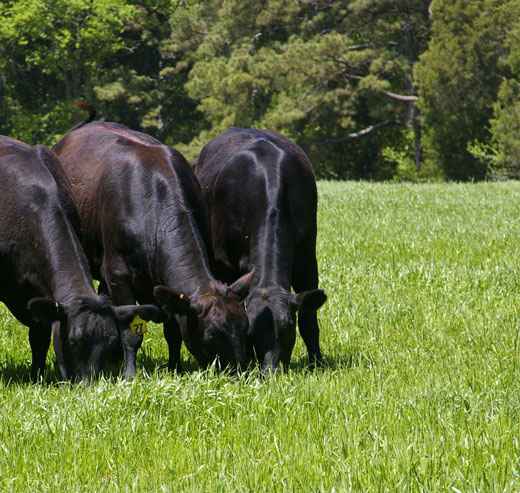Leasing Pasture: What You Need To Know

In between preparing planters and fields ahead of the planting season, many farmers and livestock owners are thinking about putting their cows out to pasture , and a few are wondering if they need to rent some additional pasture ground to ensure that their valuable pairs are well-fed over the summer months. Perhaps others have downsized their herds, and are considering leasing out their pasture ground. If you’re considering one of the above, it’s helpful to keep in mind the basics of pasture leasing, whichever end of the leasing agreement you’re on.
While determining the rental rate for cropland can be much more of a straightforward process, since it is typically determined by soil type and past yields, establishing a fair rental rate for pasture can be a bit dicey. Most often, the rental rate for pasture land is determined by supply and demand; if there is a large amount of pasture land in an area and few farmers in need of it, rental rates will be lower. Conversely, if there is a lower amount of pasture ground available and a greater need of it, rents will be higher.
In addition to supply and demand, determining pasture rental rates can be based on whether or not the land is suitable for other uses. For example, if the ground is able to produce a crop, the rental rate would have to be competitive with the rental rate for corn and bean land. Likewise, ground that isn’t suitable for corn or beans, but could be used for hay would have to reflect that rate.
Also key in deciding a fair rental rate are the conditions facing livestock producers, which are often dependant on the weather. If there have been moderate to severe drought conditions, pasture rents will be at a premium.
Generally, however, the market for pasture land rates tend to follow that of commodity and cattle prices over time, and considering the lower corn prices, it may be time for landowners to re-negotiate pasture rental rates. The market for grassland to purchase remains “hot” right now, and land values can also drive rental rates.
While the specifics vary by geographical area, the way pasture rent is typically determined in one of two ways: Either by the acre or by the stocking rate of the cow/calf pair. The latter option is paid either by the month or by the growing season, which usually runs May 15-October 15. (West of Highway 14, it is a bit later, June 1-November 1.) Particularly, in Nebraska, the range of per-acre rates run anywhere from $5-$97, depending on the location. The cow/calf per month cost ranges anywhere from $37-$60.
After determining which type of leasing method is best for each party, it’s important to lay out the terms of the lease clearly, preferably in writing. Decide ahead of time how the other factors, such as fencing materials and maintenance, water control, and fertilizer and weed control, will be handled and by whom. This will avoid any conflict or confusion that may arise during the busy growing season, and ensure a mutually satisfactory partnership. Some experts also recommend that the parties draft a drought provision in the lease, so that should a severe drought arise, such as that of 2012, both parties know what is expected of them.
If you’re considering leasing pasture land and need assistance drafting a comprehensive leasing agreement, or have general leasing questions, don’t hesitate to get in touch with a UFARM representative. We are glad to offer our expertise.
UFARM offers a full range of Nebraska land management services, including real estate sales, rural property appraisals, consultations and crop insurance. UFARM has operated in Nebraska since the early 1930’s. Contact us today!
Sources Consulted: Fisher, Jeff and David Mangione. “Establishing a Fair Pasture Rental Rate.” Ohio State University Extension. Ohio State University. Web. 08 Apr. 2015. “Six Steps for Determining 2015 Pasture Rental Rate.” Beef Producer. Farm Progress/Penton. 06 Apr. 2015. Web. 08 Apr. 2015. Vyhnalek, Allan. “Considerations for Pasture Leases.” University of Nebraska-Lincoln CropWatch. University of Nebraska-Lincoln. 03 Apr. 2015. Web. 08 Apr. 2015.

